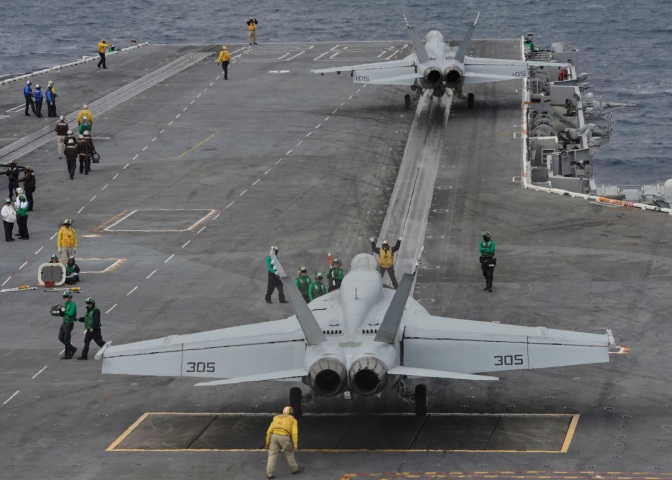The US Navy has been tiring out its F/A-18E/F Super Hornets very quickly; a lot faster than planners and Pentagon bean counters originally anticipated prior to the Navy’s decision to phase out the ever-popular F-14D Tomcat entirely in favor of the newer, wallet-friendly and extremely adaptable Boeing-built Super Hornet. Just last year, former Chief of Naval Operations Admiral Johnathan Greenert warned Congress of a fighter shortfall with the Navy’s youngest fighter aircraft. Having only entered service in 2004, Super Hornets, by early 2015, were saddled with the lion’s share of carrier-based fighter (and tanker) operations while the Navy worked at extending the lives of older F/A-18C/D “Legacy” Hornets at the depot level. This had the effect of burning out fighters faster than expected, and adding serious mileage to their airframes. But the US Navy now plans on resolving this issue by divesting itself entirely of its Legacy Hornets and the oldest Super Hornets in the fleet, while buying newer fresh-off-the-line Super Hornets to replace them both.
Over the course of lengthy deployments to combat theaters, Super Hornets have played a part in every conflict the United States has found itself involved in from Afghanistan to Syria today. Built with a “buddy refueling” capability, allowing it to function as a tanker for other Super Hornets, Legacy Hornets or EA-6B Prowlers, the F/A-18E/F has evolved into a considerably reliable multi-mission platform. An electronic attack variant, known as the EA-18G Growler, has also been evolved from the basic Super Hornet platform, now serving with the US Navy as a replacement for the aging EA-6B.

As was mentioned previously, these Super Hornets were brought on as a replacement for the F-14D Tomcat, which served as both an air superiority fighter and a strike fighter (air-to-ground role). The Navy’s Legacy Hornet fleet, which primarily serves in the strike role, by 2010 had been virtually worn out. Numerous modernization programs kept the older Hornets as relevant and viable as possible, though the larger and more comprehensive depot-level overhauls have proven to be somewhat problematic and time-consuming. The slated replacement for the Legacy Hornet is the F-35C Lightning II, the carrier-based variant of the 5th generation strike fighter, though it has yet to achieve Initial Operational Capability (IOC), and won’t for another two years. To fix the shortfall in strike fighter aircraft, the Navy began using more of its Super Hornets to fill the gap.
You already know how that story goes.
So to fix the shortfall caused by used-up and worn out Super Hornets, the Navy has committed itself to buying “many squadrons of Super Hornets”. These Hornets will likely join the Navy equipped with the latest-block hardware Boeing offers these fighters with, and could also be outfitted with the Advanced Super Hornet upgrade, which includes a revamped cockpit and conformal fuel tanks (CFTs). The money for the new Super Hornets will be made available by 2018, and the wishlist will be included in that year’s defense budget. The Navy doesn’t plan on giving up on the F-35C, and still aims to have it operational by 2019 at the latest, serving in tandem with the F/A-18E/F for years to come.

So what happens to the oldest Super Hornets in the fleet, many of which are currently serving in Fleet Replacement Squadrons (for training purposes)? It’s very possible that a number of them will actually find themselves sitting in Boeing hangars, undergoing upgrades and modernization programs to be declared fit for service with a foreign military… namely Canada, which just last month promised to pick up 18 Super Hornets on an “interim” basis. A different foreign buyer could potentially decide to buy these aircraft refurbished as well. It’s also possible that these aircraft are stripped for critical parts and mothballed, or outright decommissioned, de-militarized and shipped off to museums and military bases for use as gate guardians and exhibits. As for the Legacy Hornets which are now firmly on the chopping block, many will probably be transferred to the US Marine Corps which has serious Hornet issues of its own.

A blog is had by me as well, and I think I need to enhance the information I have on the website.
Anyways, I just wished to compliment you on your blog.
LikeLike